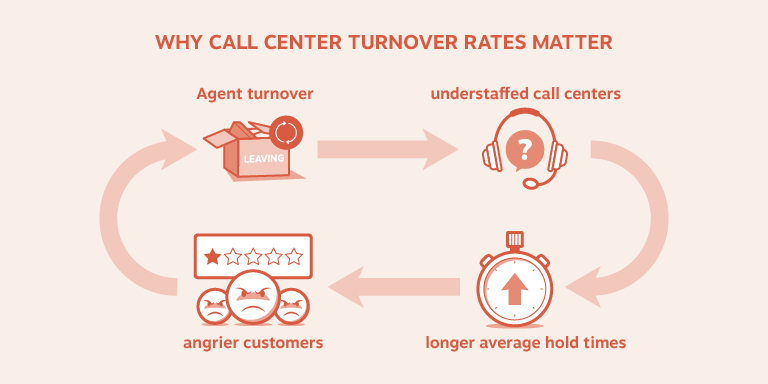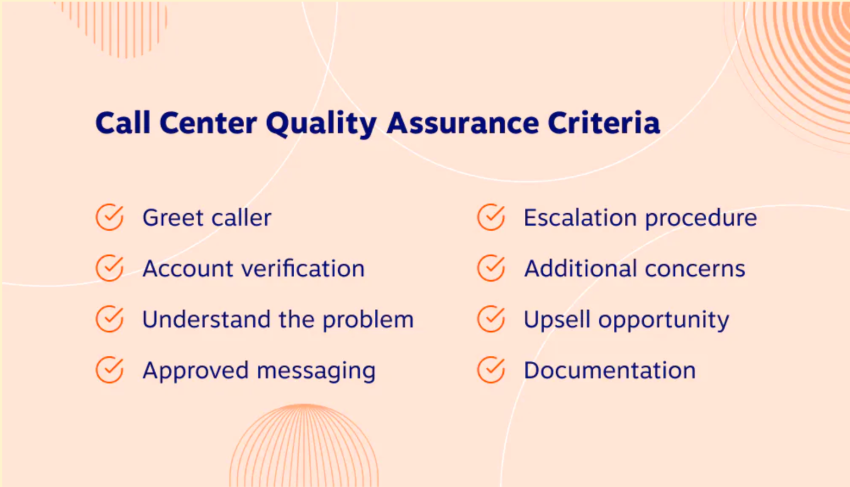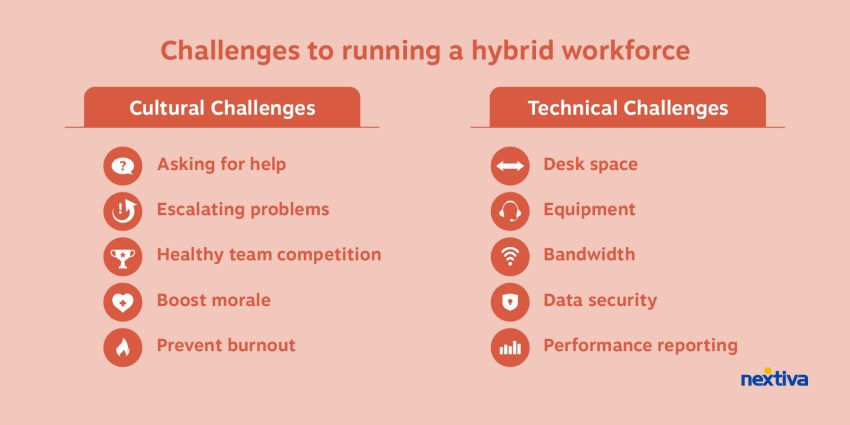It’s no secret that contact centers are essential for businesses. Whenever a customer has a question, whether they need troubleshooting or have basic queries, being able to reach a person on their terms ensures they’ll get the help they need.
Contact centers can quickly become expensive due to the technology, staffing, and resources required. But with the right software and best practices, you can have a cost-effective contact center without sacrificing quality.
Let’s look at the costs that go into opening and operating a contact center and how you can minimize expenses and maximize returns with the right technology.
Evaluating contact centers? Get the buyer’s guide.
This guide reveals the five pillars of a modern platform, key questions to ask, and red flags to avoid.
Typical Contact Center Costs
With technology, staffing, and resource costs in mind, what is the typical cost of running a contact center? Several factors can affect this cost, but this guide provides an approximation for each expense.
Contact center platform
The first expense will likely be the communications platform itself. This is the technology at the core of your contact center, which you’ll be relying on for all your customer communications.
Several factors can impact the average cost of a contact center platform, including your provider, the pricing model (per seat or usage), the length of your contract, and more. However, keep in mind that the least expensive platforms also tend to have the fewest features.
The lower end of prices for contact center solutions is around $75 per user monthly, and they typically provide essential features but not much else. As features are added, prices can increase to more than $200.
As this is a very wide range, it’s a good idea to shop around and see what different solutions provide and at what price. There’s a balance to be found for businesses of all sizes.

Voice channels
Voice calls are an important part of the contact center experience. Voice channels can be charged as a flat fee as part of the platform, at a per-minute rate, or a combination of both.
Most contact center software providers offer users unlimited voice calls as part of the user licenses, subject to fair use limitations. But in some cases, metered voice fees apply.
Twilio cites that the average cost of voice channels typically falls within the $0.50–$1.75 per minute range, averaging at around $1.10 per minute. For normal customer calls, the cost per call will average at around $6 (give or take, depending on the efficiency of your agents).
A pricing structure with more minutes often offers a lower price per minute, so consider the number of calls your contact center typically receives when making your choice.
Social media channels
How much does it cost to interact with customers on social media? Customers will often try reaching out through a social network, such as Facebook, LinkedIn, or X, rather than calling a contact center.
An average social media customer service interaction costs around $1, making it comparatively cheaper than voice calls. As a result, social media channel offerings are typically less expensive than voice channels and cost anywhere from $10 to $60 per month (depending on any additional functionalities you may include).
SMS/MMS channels
Text messaging is another important channel and is one of the less expensive ones overall, although the type of messaging your contact center uses will impact the cost.
In the business communications industry, SMS messages often cost $0.01 per message, while multimedia messages cost around $0.03. As with voice calls, this can vary based on the volume of messages and where your recipients reside.
Data storage
Your contact center collects a vast amount of data on customers, products, analytics, and more. So where does it all stay? You need to store that data so it’s secure and available when needed.
Data storage isn’t cheap, although you can mitigate the cost by using a cloud solution. The average cost of data storage on a cloud platform for a contact center is around $1,350 per agent per year, compared to $2,100 for an on-premises contact center data storage solution.
Data transfer/egress
Transferring data also has a cost, whether you’re migrating information to a new platform or sharing it from a cloud data center in another region.
The cost of data transfer or data ingress can vary wildly, but typically, service providers offer around 100 gigabytes of free outbound traffic per month. After that, prices are typically around $0.08 per gigabyte, with higher volumes of data costing less per gigabyte.
AI/ML functionality
Artificial intelligence (AI) is one of the biggest trends in contact center technology. AI can be used to provide information during calls, analyze historical data to identify trends and predict customer behavior, assist with self-service, and more.
However, because the technology is still relatively new and growing, prices vary the most significantly. The cost of AI functionality will vary depending on usage, such as per conversation or minute processed. This is an area where you’ll want to check with each provider that you’re considering to understand their pricing model.
Where does your CX strategy stand with AI?
Take the AI Maturity assessment to get personalized recommendations on how to enhance your CX.
Workforce management
Workforce management (WFM) tools are essential for handling scheduling and staffing, forecasting call volumes, and ensuring efficiency across your contact center. A good WFM solution will ensure you’re never over- or under-staffed and your agents are all scheduled properly.
WFM is another area where prices will vary depending on the solution you use and the size of your contact center. Average WFM solution prices range from $6 to $20 per employee per month, although it will change depending on the solution.
Custom integrations
Contact centers need to integrate with other solutions, such as customer relationship management (CRM), customer data platforms, or AI tools. Most contact center solutions are designed to integrate with the most popular solutions, but sometimes, custom integration is necessary for proprietary or custom-made solutions.
In these cases, creating a custom integration can be a large expense, depending on factors like the complexity of the solution, development time, resource requirements, and so on. Contact centers with open APIs are easier to work with, but in many cases, developing custom integrations can cost thousands of dollars.
However, unlike many other expenses listed here, this is an upfront cost rather than a recurring expense.
Additional Costs of Running a Contact Center
While the technology expenses are important considerations, there are other expenses we can’t overlook. These tend to be common business expenses.
Staffing
A contact center can’t staff itself. Keeping a full staff of agents trained and ready incurs expenses outside of staff salaries, including:
- The recruitment, training, and onboarding of new agents
- Agent turnover, which can cost contact centers millions of dollars if churn is too high
- The provision of coaching and feedback for agents, including training and development programs to improve performances
- Incentives and bonuses to reward and encourage high performance

Technology integrations
There are several tools and technologies that you’ll want to integrate into your contact center solution. In addition to any custom integrations, you’ll want to consider:
- Knowledge management systems to help agents access product information and guidance for certain issues
- Customer satisfaction surveys to measure and analyze customer sentiment
- Reporting and analytics tools to provide insights into call volumes, KPIs, trends, and other key contact center metrics
Business continuity
Of all the expenses listed, nothing can cost your company quite as much as downtime. You can mitigate this risk by ensuring you have business continuity measures in place, including:
- Backup systems and redundancy to ensure continuity in case of any outages or system disruptions
- Cybersecurity measures to protect your data and systems from attacks or breaches
- Crisis communication plans to ensure you can effectively communicate should anything go wrong
Call Center Pricing vs. Contact Center Pricing: Key Differences
The terms “call center” and “contact center” have been used interchangeably in the industry, but today’s sales and support teams do more than just handle phone calls.
Modern omnichannel contact centers enable agents to support customers across channels, like voice, email, social media, web chat, and more, while maintaining customer information at every touchpoint for a consistent, high-quality customer experience.
Naturally, this means that call center pricing will be quite different from contact center pricing.
Technology expenses
Call centers only allow for outbound or inbound phone calls. Call center software only operates on one channel to distribute calls among multiple users, even if agents access other tools simultaneously.
Contact centers that support multiple channels require additional software and integrations, which increases platform licenses and maintenance costs beyond voice-only call centers.

Agent training
Customer service representatives need to manage the multiple channels. While traditional call center agents may only need to learn how to handle the phone system and any CRM tools they use, that’s only the start for contact center agents.
Contact center agents will need to learn how to manage multiple communication channels. For instance, customer support via web chat typically requires short and concise messages, whereas email support usually uses longer, more detailed replies.
Quality assurance
It may go without saying, but it’s easier to monitor and evaluate customer interactions on a single channel than across several. It’s significantly harder to track interactions over multiple channels and touchpoints.
This can often require specialized tools and talent, which is another cost of running a contact center.

Contact Center Cost Comparison
Whether your contact center uses an on-premises, cloud-hosted, or hybrid solution will have a major impact on the overall price. There are pros and cons for each type of contact center, which may impact which one you choose.
| Type of contact center | Pros | Cons |
|---|---|---|
| On-premises | Greater control Long-term cost savings Minimal software changes | Ongoing maintenance Limited features Single point of failure |
| Cloud-based | Lower upfront costs Customizable features Redundant networks | Variable pricing Increased long-term costs |
| Hybrid | Enterprise scalability Multiple connected contact center Access to modern features | Existing infrastructure used Complex setup and onboarding Extra admin overhead |
On-premises contact centers
An on-premises contact center platform is one in which you own and manage all the hardware, software, and infrastructure in a physical location. This gives you more control over your contact center but comes with additional risks and responsibilities.
The pros of an on-premises contact center are:
- Control over and the ability to customize the infrastructure, data, and security
- The ability to operate without depending on a strong internet connection
- The potential for long-term cost savings for high call volumes
The cons of an on-premises solution include:
- High upfront costs due to the hardware, software, and IT expenses, in addition to any other facilities costs
- Limited scalability, as scaling requires physical infrastructure changes
- The need for an in-house IT team to handle maintenance and upgrades
- Difficulty adding new cloud-based innovations
- Challenges with managing security, as it can be resource-intensive while still leaving the possibility of security risks
Pro tip: Consider what’s most important: maintaining older call center hardware with a single point of failure or migrating to the cloud with more flexibility.
Cloud-based contact centers
Using a cloud contact center is a popular alternative to on-premises solutions. This model leverages a third-party vendor’s cloud infrastructure for technology and services at a monthly or yearly subscription.
Pros of a cloud contact center are:
- Low upfront costs thanks to the lack of hardware and IT staff expenses
- Excellent scalability, as seats can typically be added or removed on demand
- Lower maintenance costs, as the vendor manages updates and maintenance
- Good flexibility, as it is easy to add new features and technology, such as AI
- High agent satisfaction, as they can work from anywhere with an internet connection
The cons of a cloud solution are:
- You have less control over features and functionality compared to on-premises setups
- You incur additional fees for extra features and add-ons
- You’re dependent on a reliable bandwidth connection for consistent operation
Hybrid contact centers
A hybrid contact center solution tries to balance the best of both models, using a mix of on-premises and cloud-based solutions to provide both scalability and customization.
Pros of a hybrid contact center solution include:
- The flexibility and scalability of a cloud solution and the control of on-premises platforms
- The potential cost savings of offloading parts of the solution to the cloud
- The ability to gradually and seamlessly transition from an on-premises solution to the cloud
Cons of a hybrid solution include:
- The complexity of managing on-premises and cloud environments simultaneously
- Potential compatibility issues when integrating the systems
- The added complexity of managing security across both environments

Level Up Your CX With Nextiva Contact Center
With all these expenses, it might seem impossible to save money when implementing a contact center. But with the right platform, like Nextiva Contact Center, you’ll be able to minimize expenses and maximize productivity, allowing your company to enjoy the full benefits of a contact center.
Why Nextiva? Here are a few good reasons:
✅ Trim the costs of operating a contact center
Nextiva’s contact center solution is affordable for businesses of all sizes.
As a cloud-based subscription model, Nextiva helps customers save on upfront hardware and IT costs. Nextiva’s pay-as-you-go pricing and scalability help ensure you’re only paying for the seats you need to avoid over-provisioning.
What about the different channels and features that need to be integrated into a contact center? Nextiva’s omnichannel contact center combines multiple channels into a single platform, so you’re getting everything you need in your tech stack without needing multiple licenses and vendors.
At the same time, you’ll be able to increase productivity and save on resources. Nextiva’s tools and features can decrease your average handle time, improve customer satisfaction, and increase first call resolution rates, thus reducing repeat calls and overall call volume.
✅ Empower customer service agents
One of the hidden costs of a contact center comes from agent churn. Losing agents and then hiring and training new agents takes tremendous time and resources, so anything that can keep agents happy and productive can help significantly.
Nextiva empowers agents through assistance and feedback. Its unified interface simplifies workflows and provides real-time data to help agents provide more personalized service by giving them easy access to information.
Nextiva provides automated assistance to guide agents through complex interactions and offers collaboration tools to help agents share knowledge and support.
Additionally, performance tracking tools can provide feedback and development opportunities to ensure that every agent is equipped to handle customer queries.
✅ Ace compliance and security
Uptime and security compliance are the biggest concerns for on-premises contact centers. With Nextiva, you don’t have to worry about those issues. Not only does Nextiva have 99.999% uptime, but it also has disaster recovery plans to guarantee business continuity.
Security compliance is essential. That’s why Nextiva has multiple security features in place, including encryption, access control, and data protection. Nextiva’s compliance certifications ensure that it meets all industry regulations, and it has regular updates and audits to protect against evolving threats.
Are you ready for a secure, powerful, and affordable contact center solution that eliminates most of the biggest expenses of CCaaS?
Scale up with contact center AI.
All conversations in one platform. Empowering agents. Satisfying customers.

















 Customer Experience
Customer Experience 














